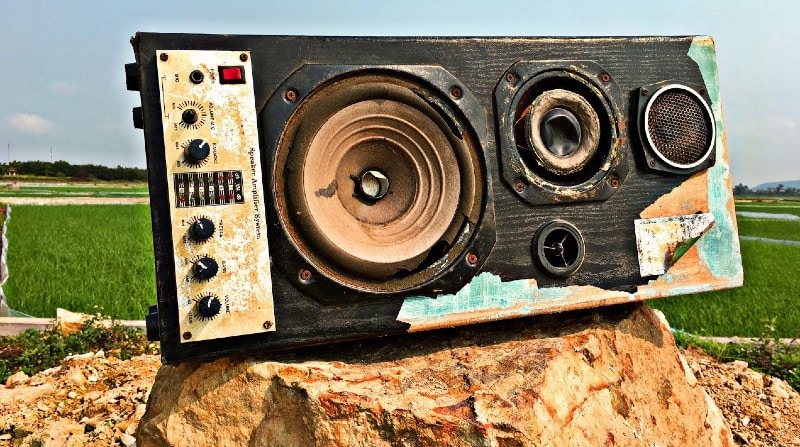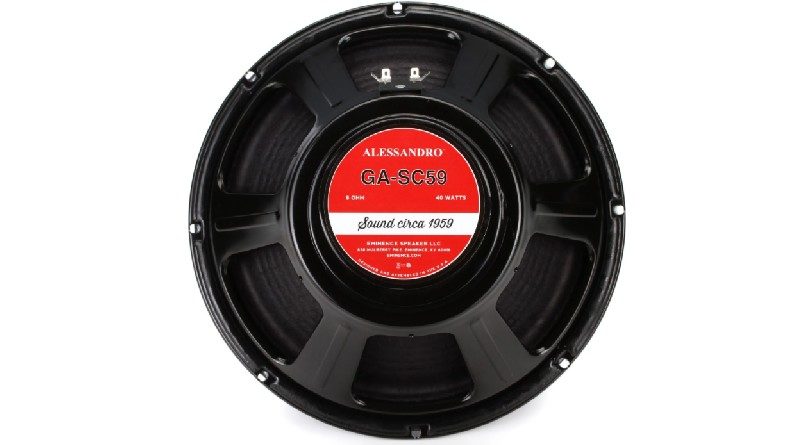We all know somebody with an opinion on breaking in guitar speakers. Some people think it’s a myth, others won’t even dream of cranking their amp until they’ve put hours of warm up time into them. So, what’s the truth in all of this?
In this KillerGuitarRigsGuide, we’ll be talking all about speaker break in, why it’s necessary and how to do it the right way!
Interested in guitar speakers?
Check out our full rundown of the best guitar speakers.
Contents
Why Do Speakers Need To Be Broken In?
Just like an athlete needs to warm up before taking part in an event to prevent injury, an amplifier speaker must also spend some time preparing before it can perform to the highest levels.
When you first purchase a new amp, the speakers will not sound their best right out of the box. You might even find that they sound muddy and lack some clarity – this can be disconcerting, especially if you’ve spent a lot of money, or if it’s your first time buying an amp, but remember that this is normal.
The coil that is wrapped around the center of the speaker is what generates the sound, and as it heats up and cools down repeatedly, it will loosen and tighten its grip on the permanent magnets mounted on either side of the coil, and will eventually settle into a resting position. This process happens naturally over time, and there isn’t much you can do to speed it up.
Most high quality amps have their speakers baked in for several hours before they leave the factory to get the break in started, reducing the amount of time that the consumer needs to spend before being able to unleash their new amp, but part of the process still needs to be carried out by the end user.
It’s not just high end amps and speakers that benefit from this break-in period – budget rigs will also sound better after a thorough break in, although the difference will be less noticeable than it is with premium gear
Burning in your speakers will help you to get the best possible tone, and it will also likely extend the life of your speakers, keeping them sounding good for years to come.
Pushing your speakers too hard, too soon can have the exact opposite effect, however. If they aren’t given an appropriate burn in period, you might find that you begin to notice rattling noises, a completely flat mid range tone, and a raspy quack at the top end. Worst case scenario, you could even blow the speaker, which is what happens when the cone itself ruptures.
How Do I Break In My Amplifier Speakers?
There is no one technique for breaking in speakers. The best method depends a lot on the type of amp, the brand and size of speaker, and numerous other factors. In fact, the owner’s manual of your amplifier, or the speaker itself, if you purchased it as an aftermarket upgrade, may well give guidance on the procedure and timeframe to properly break in the speaker.
If you don’t have the manual, or it doesn’t feature any break in details, there are some tried and true techniques that tend to work universally:
The first thing to try is to let your amplifier run at full volume overnight. Plug in your guitar, turn on the amp, with the volume low for 2 to 3 minutes. Then, crank up the volume, and put your guitar back on its stand with the pickups pointing away from the speaker to prevent feedback. If you’ve got dogs, cats, or kids, it’s a good idea to lock whichever room you’re using for the break in, if possible, to prevent an accidental full volume strum.
Once you’ve run it overnight you can start playing through it. Turn the volume down to bedroom levels to begin with. Play through clean and dirty channels if available at this volume, and after 2 to 3 hours of bedroom levels, you can move up to middle volumes. Repeat the process of switching between channels. If you have a pedal board, you can start to introduce FX at this point. This will cause the speaker to vibrate in a different way, so don’t rush the introduction of FX.
After 3+ hours at mid volumes, you should be OK to start moving up to high volume. Try not to keep the volumes maxed for extended periods until the speaker is fully broken in.
In some cases, particularly with low powered amps (under 50 watts for solid state and under 10 watts for tube), the speaker might not even need the overnight burn in. With these small amps you should be safe to go ahead and start using them right away, but avoid exceeding more than 75% of the max volume for the first 24 hours of play time to avoid damage.
How Do I Know When My Speakers Are Broken In?

The first thing you’re likely to notice is that your speaker’s high end will be much crisper and cleaner, they’ll lose any tinny qualities and start to generate some warmth. You might also notice a fatter bottom end, with much more punch, and fuller mids. Overall, everything will sound deeper, richer, and more ear pleasing
You’ll also likely notice that there is more headroom on your clean channel, which will make your pedal board sound better, too.
Depending on the speakers you have in your amp, the power of the amp itself, and the construction of the cab you may not hear much difference at all. This doesn’t necessarily mean that your speakers aren’t broken in. In fact, if you’ve followed the steps for break in and allowed at least 24 hours of play time before pushing the amp, there’s a good chance they are broken in. So, even if there’s not much difference tonally, you’ve still done the right thing for your speakers, and likely extended their longevity by giving them a chance to stretch out and settle before cranking them to 11.
Final Thoughts On Burning In Guitar Amp Speakers
There is enough anecdotal evidence to suggest that the break in period for amplifier speakers is indeed real, and not an urban legend as some would suggest. Even if the damage that prematurely maxing your speakers is miniscule, there’s absolutely no harm in spending a few hours playing at low volume to potentially extend the life of your speakers by months or years.
Properly breaking in your speakers isn’t just about extending their lifespan, it’s also a good way to improve their accuracy and their overall tone. To get the most out of your amplifier and its speakers, we always recommend a thorough break in period (and keeping your bass away from it).
Check out these other similar articles:


